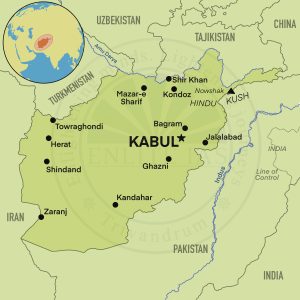Why in the news?
- A 6.0 magnitude earthquake struck eastern Afghanistan with its epicentre about 27 km E‑NE of Jalalabad, at a shallow depth of about 8–10 km.
Earthquake in Afghanistan
- Causes of the Earthquake:
- Tectonic Setting: Afghanistan lies at the collision zone of the Indian Plate and Eurasian Plate.
- The convergence of the Indian plate with Eurasian plate leads to compressional forces, crustal deformation, and frequent seismic activity.
- Active Fault Lines: The region has multiple active thrust and strike-slip faults (e.g., Chaman Fault System, Pamir–Hindu Kush Seismic Zone) and the recent quake’s epicentre near Jalalabad (Nangarhar province) lies close to these fault networks.
- The Hindu Kush–Pamir ranges are among the most seismically active regions in the world.
- Tectonic Setting: Afghanistan lies at the collision zone of the Indian Plate and Eurasian Plate.
Afghanistan
- Location: Afghanistan is a landlocked country located at the crossroads of Central Asia and South Asia.
- Capital: Kabul
- Border Countries: Pakistan, India, Iran, Turkmenistan, Uzbekistan, Tajikistan and China.
- Geography: The country is predominantly mountainous where Hindu Kush mountain range passes through this country.
- Major River System: Kabul River System
- Fact: Afghanistan is one of the Snow Leopard range country.

